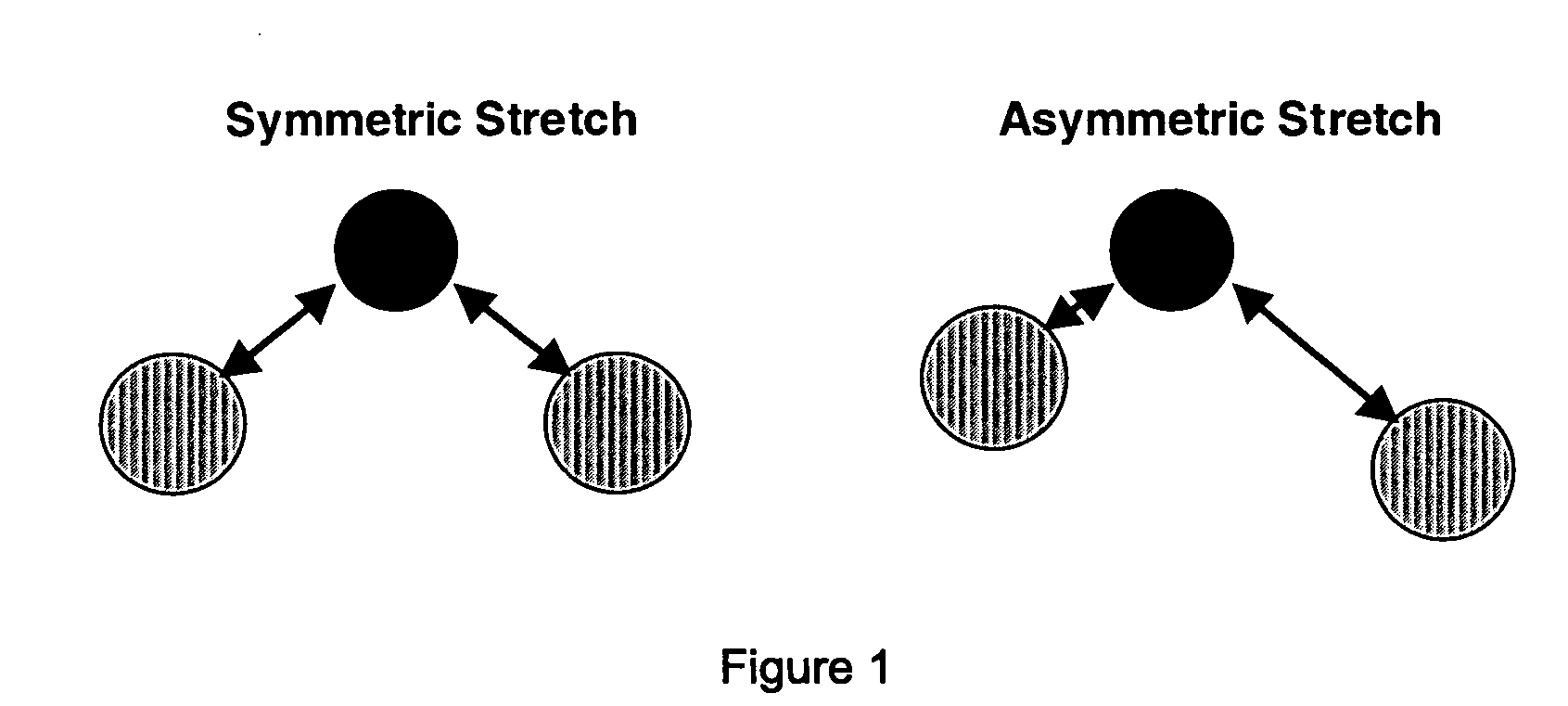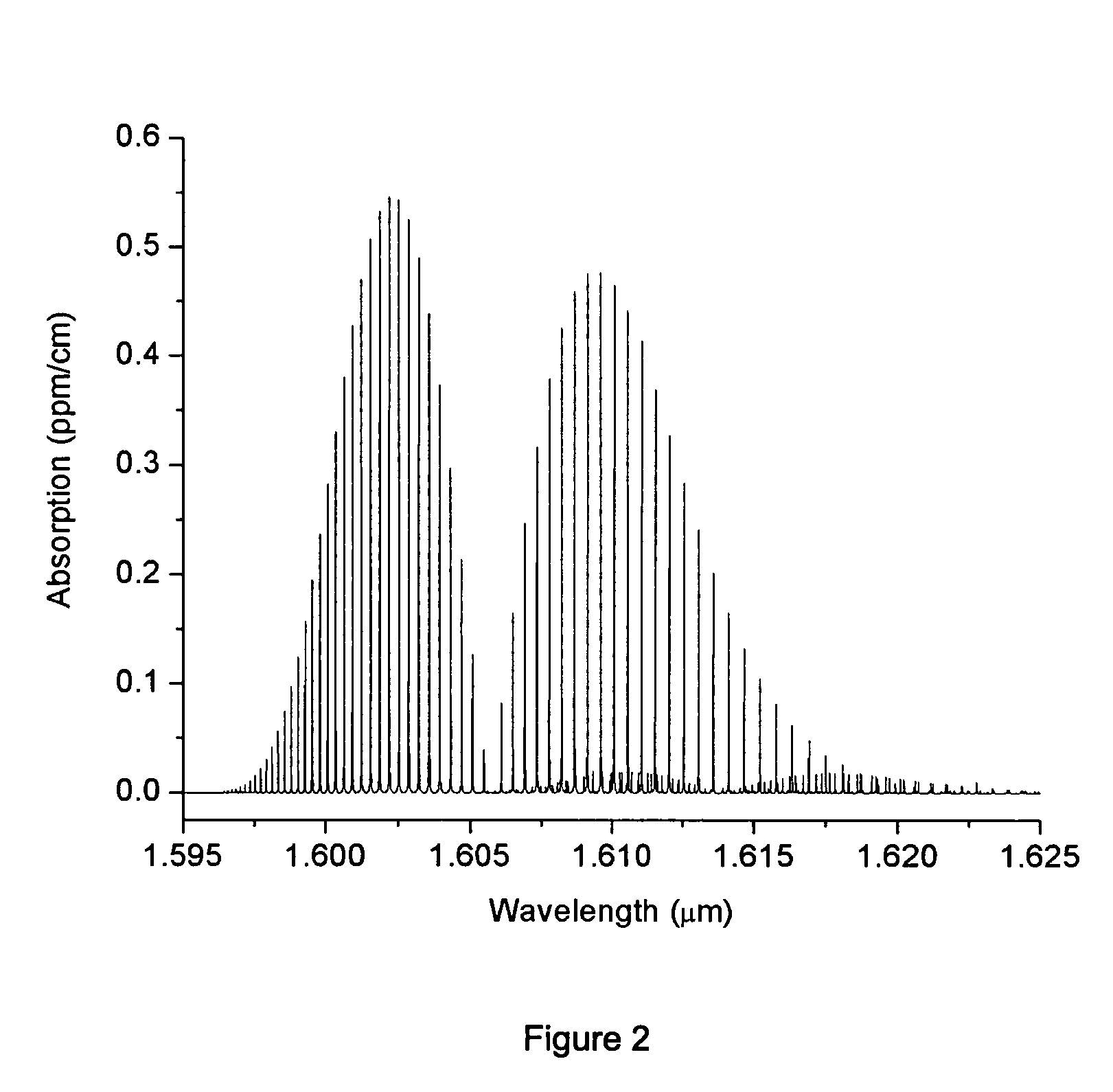Method for increasing the dynamic range of a cavity enhanced optical spectrometer
a technology of enhanced optical spectrometer and dynamic range, which is applied in the direction of instruments, color/spectral properties measurement, material analysis, etc., can solve the problems of inability to accurately measure the absolute absorption signal, limited instrument capability, and inability to fluctuate sensitivity
- Summary
- Abstract
- Description
- Claims
- Application Information
AI Technical Summary
Problems solved by technology
Method used
Image
Examples
first embodiment
[0058] The process of the present invention encompasses several alternative embodiments for measuring the concentration of one, or in some instances more than one gaseous target analyte present at low concentration. In a first embodiment, the target analyte is present in an admixture with at least one additional gaseous species and is detected using a cavity enhanced optical spectrometer by a process comprising: [0059] i) identifying from the spectrum of the pure target analyte a series of absorption peaks, each member of said series being at the spectrometer operating pressure: a) present in the wavelength emission range of said spectrometer, and b) within said emission range free from spectral interference by peaks of any of said additional gaseous species, the first member of the series being the strongest spectral absorption peak of said target analyte [0060] ii) identifying one or more successive peaks of the series which have an absorption that is weaker than the immediately p...
second embodiment
[0063] the present invention provides a process for measuring the concentrations of at least two gaseous target analyte species present in a gaseous admixture comprising at least two different chemical compounds or at least two different isotopomers of the same chemical compound using a cavity enhanced optical spectrometer, the process comprising: [0064] i) identifying a spectral absorption peak for each said target analyte species which peaks are: a) present in the wavelength emission range of said spectrometer, and b) are free from spectral interference at the spectrometer operating pressure by peaks of any of the other compounds or isotopomers present in said admixture, and whereby the height of each of the identified absorption peaks is within a factor of 10 of the height of the other identified peaks, [0065] ii) performing a spectral scan at the wavelength of each of the peaks identified in step i), and [0066] iii) calculating the concentration of each target analyte species fr...
PUM
| Property | Measurement | Unit |
|---|---|---|
| wavelength range | aaaaa | aaaaa |
| wavelength range | aaaaa | aaaaa |
| reflectivity | aaaaa | aaaaa |
Abstract
Description
Claims
Application Information
 Login to View More
Login to View More - R&D
- Intellectual Property
- Life Sciences
- Materials
- Tech Scout
- Unparalleled Data Quality
- Higher Quality Content
- 60% Fewer Hallucinations
Browse by: Latest US Patents, China's latest patents, Technical Efficacy Thesaurus, Application Domain, Technology Topic, Popular Technical Reports.
© 2025 PatSnap. All rights reserved.Legal|Privacy policy|Modern Slavery Act Transparency Statement|Sitemap|About US| Contact US: help@patsnap.com



